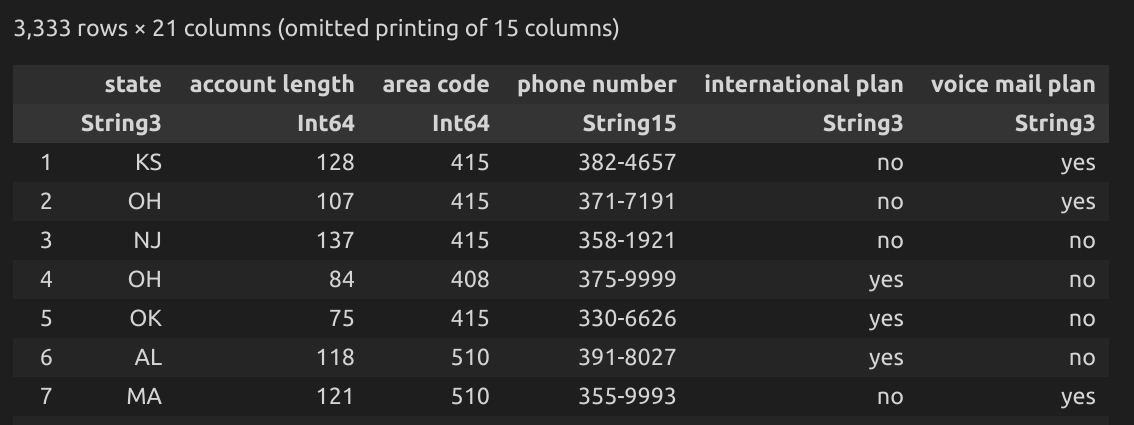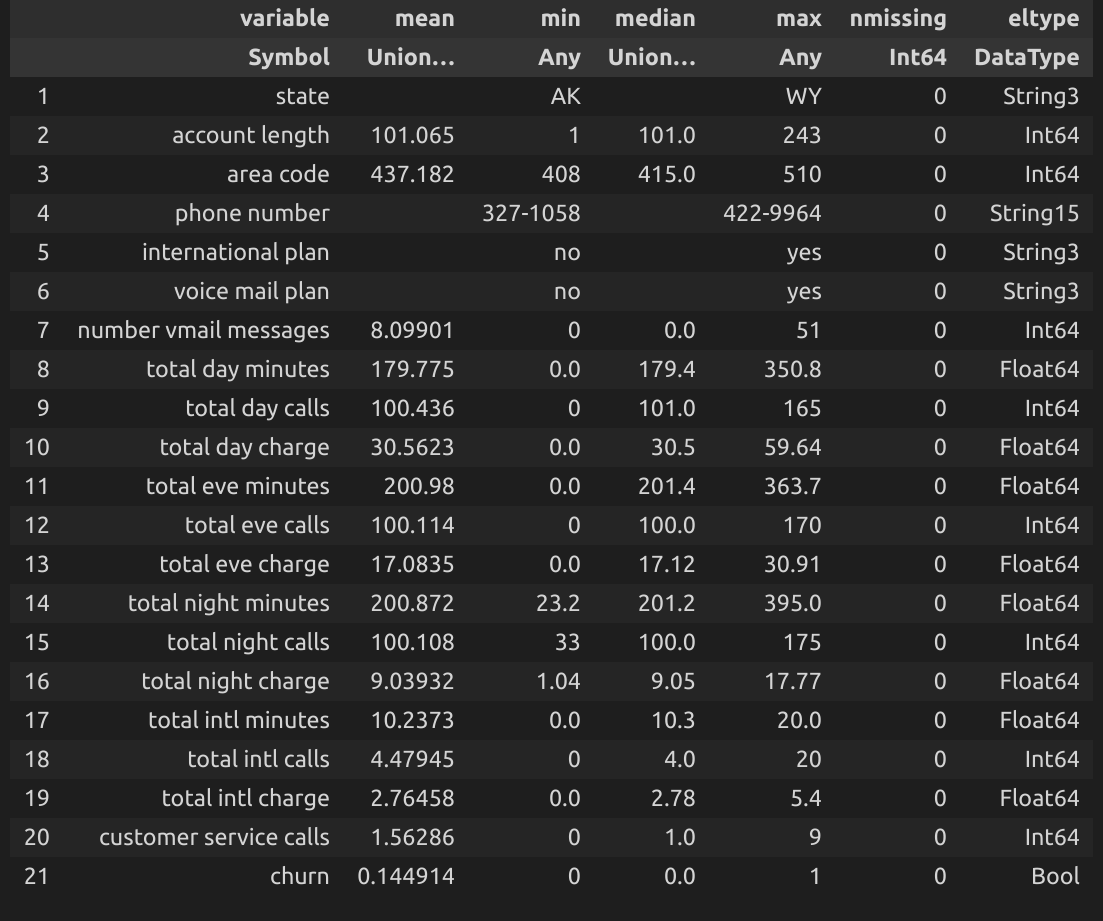My First Machine Learning Project in Julia
This year, I planned to learn Julia. As a kick of project, I decided to build a ML model using Julia. you may ask why Julia?
A few reasons which I reasonated with are:
- Julia is fast
- Julia supports multiple dispatch as a first class citizen
- Custom functions which can executed at speed
- Julia is a dynamically typed language which does not require compiling in advance like C++
- Julia does not suffer from “two-langauge” problem like python.
- Amazing package management
- Julia is easy to learn like python
- Julia has a good ecosystem of packages for Machine Learning, Deep learning, Optimizations, simulation etc. In future I would like to learn more about simulation and optimization. Thers is no use of ML model predictions if they are not used for decision making. Optimization will help change that.
Years before as part of the interviewing process, a company provided me data to build a model. The data is related to telecom industry. The objective was to predict the churn of the customers. I used the same data to kick-off my first ML project in Julia. This will be a two-part blog post. In the first part, I will explain the steps I followed to prepare the data. In the second part, I will build different models and show the results.
To start with, I downloaded Julia, setup VS code, and configured the IDE to use Julia in the VS Code notebooks. Followed by creating an environment for the project. All of the steps required a fair amount of googling. Once the environment is set up, then the project was ready to go.
Load the required packages
using GLMNet
using MLBase
using Plots
using DecisionTree
using NearestNeighbors
using Random
using LinearAlgebra
using DataStructures
using DataFrames
using LIBSVM
using CSV
using CategoricalArrays
Read the data
data = CSV.read("telecom_churn.csv",DataFrame)

# Check the shape of the data
println(summary(data))
3333×21 DataFrame
# Look at the data types and stats
describe(telecom_data)

# Remove phone number as it does not have an information value
data = select!(telecom_data, Not(:"phone number"))
There were string columns in the data. I converted them to categorical values. This took a lot of googling. Also, I din’t know if the ML models in Julia will accept categorical data or it will expect one-hot encoded data. I provided the categorical data as input, but it was not accepted by the model. Then I converted the categorical data to one-hot encoded data.
# Convert string to categorical data
area_code = categorical(data[!,:"area code"];)
data[!,:"area code"] = area_code
I have converted all the string columns to categorical data in the same fashion.
I tried to create a function and use, but was not able to get it to work. I need to learn more about writing functions in Julia.
# The code I used for the function
function change_string_column(df, col_name)
cat_array = categorical(df[!,col_name])
df[!,:col_name] = cat_array
df
end
The function was executing succesfully,but the string was not getting converted to categorical data.
I wanted to check the number of unique values in categorical columns.
countmap(data."state")

There were 51 unique values in the state column. It means 51 new columns will be added to the data when this column is one-hot encoded.
ux = unique(data."state"); transform!(data, @. :"state" => ByRow(isequal(ux)) .=> Symbol(:"state_", ux))
I used the above code for all the categorical columns.
Now, I need to remove the redundant original categorical columns.
select!(data,Not(:"voice mail plan"))
Again, I was not able to remove all the redundant columns at once. I tried different methods but none of them worked.
I created a vector for the churn column and removed churn column from the dataframe.
churn = data[!,:churn]
Created a matrix for all the predictors.
X = Matrix(data[:,1:73])
churnlabelsmap = labelmap(churn)
y = labelencode(churnlabelsmap, churnlabels)
With this, my data is ready to be used for training the Machine learning models.
Scope for improvement
- I need to learn more about writing functions in Julia, there by avoid writing the same code again and again.
- Learn operating on multiple columns at once, like deleting multiple columns etc.
- Learn more dataframe operations and ofcourse to explore and visualize the data. May be this is a topic for a future blog post
In the next part, I will be using this data to build different ML models and analyze the results.